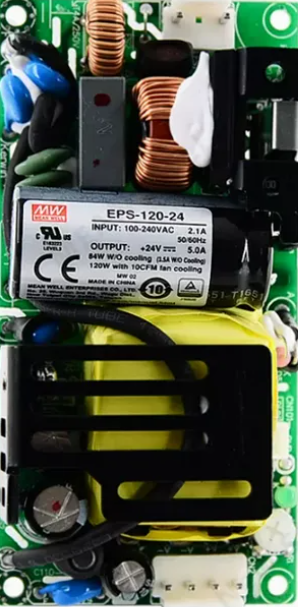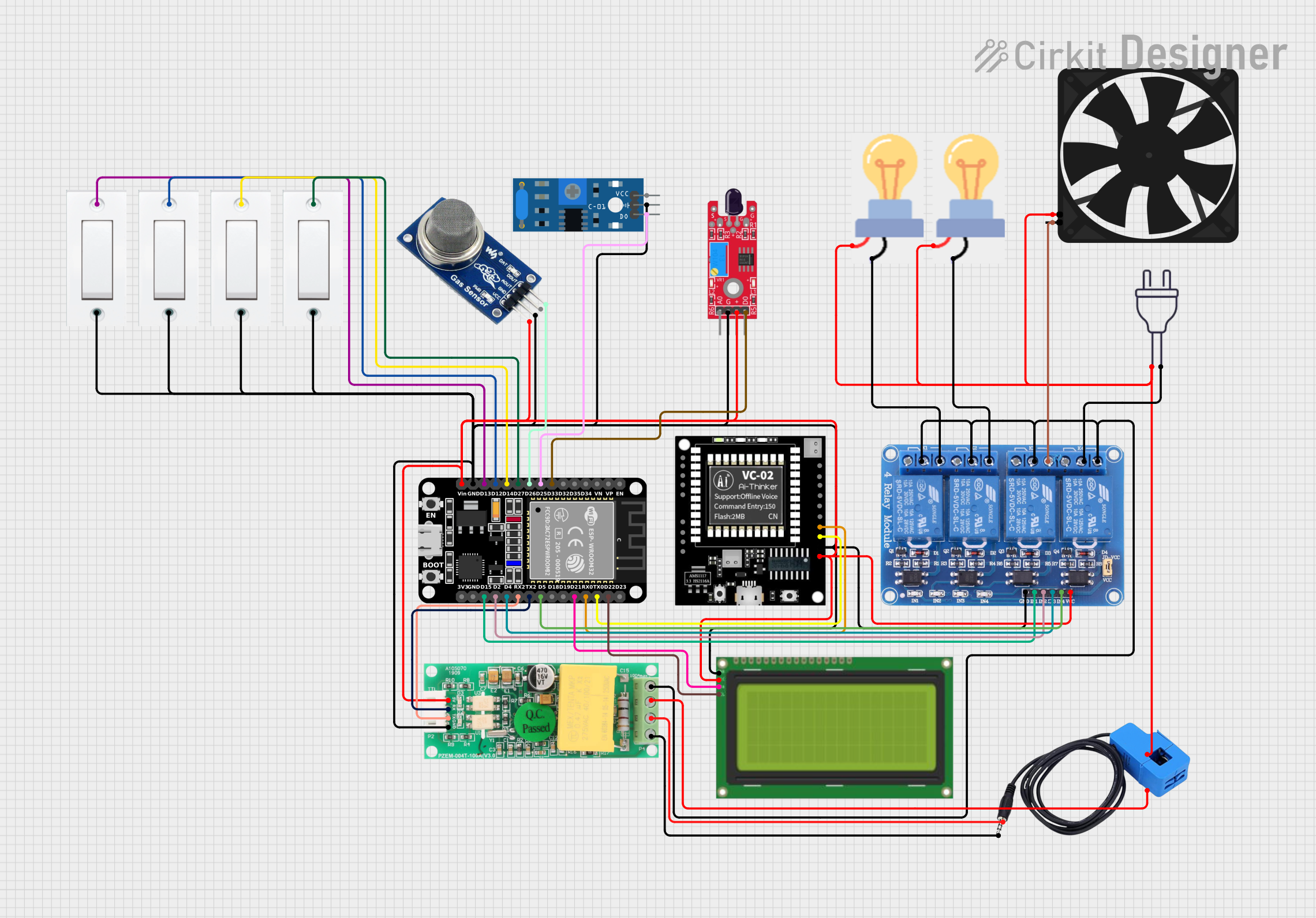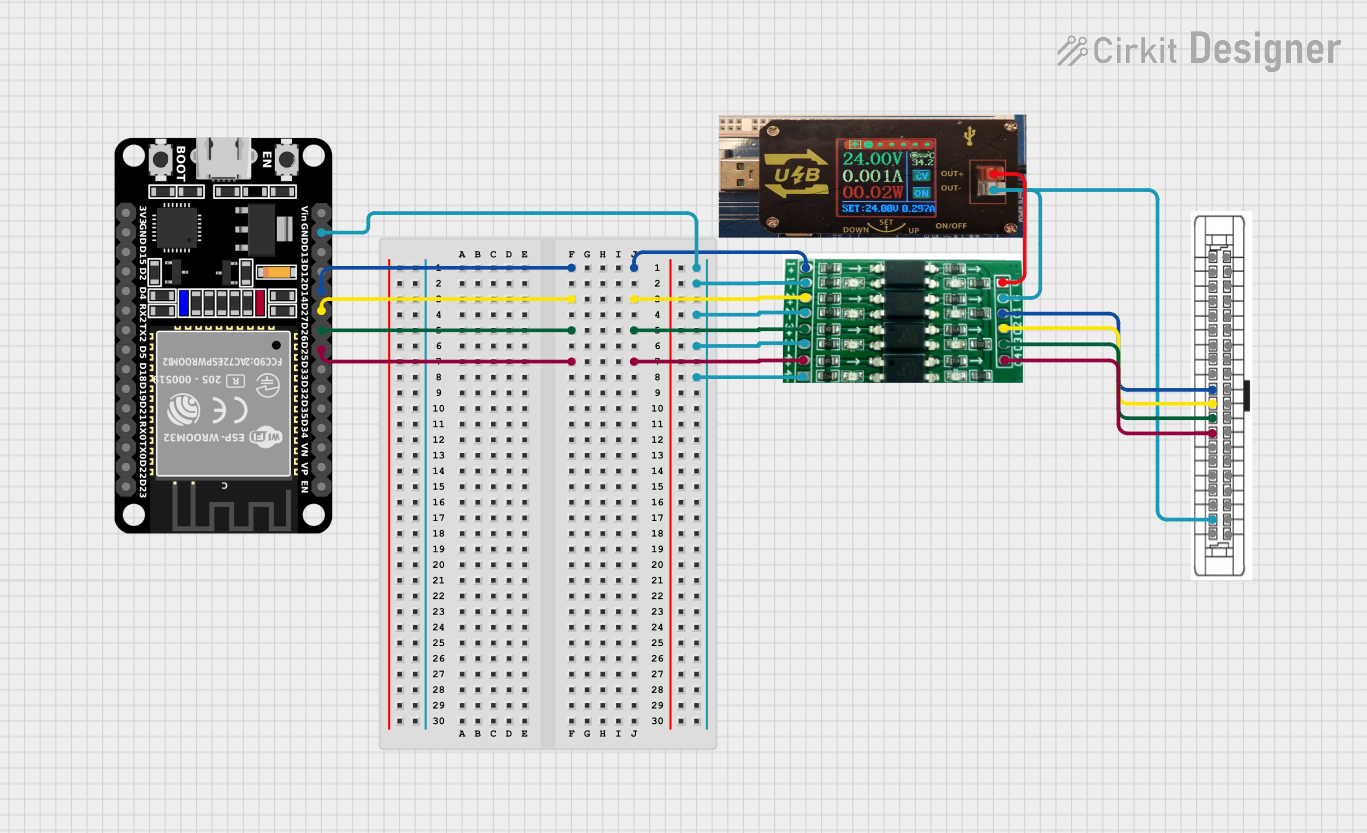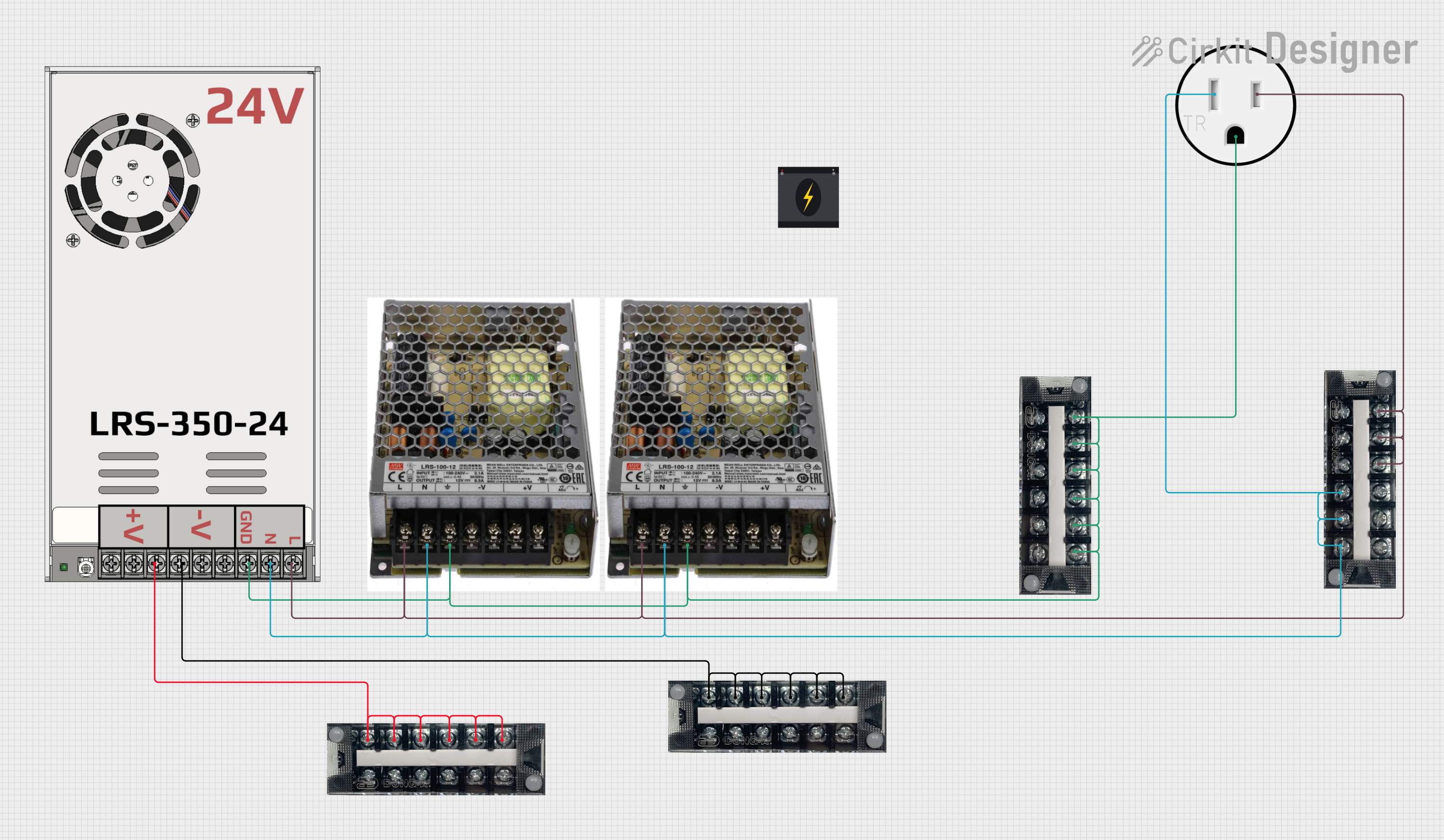
How to Use EPS-120-24: Examples, Pinouts, and Specs

 Design with EPS-120-24 in Cirkit Designer
Design with EPS-120-24 in Cirkit DesignerIntroduction
The EPS-120-24 is a 120W enclosed AC-DC power supply manufactured by Converter. It delivers a stable 24V DC output and is designed for a wide range of applications, including LED lighting systems, industrial automation, and general-purpose electronic equipment. This power supply is equipped with essential protection features such as short circuit, overload, and overvoltage protection, ensuring reliable and safe operation in demanding environments.
Explore Projects Built with EPS-120-24

 Open Project in Cirkit Designer
Open Project in Cirkit Designer
 Open Project in Cirkit Designer
Open Project in Cirkit Designer
 Open Project in Cirkit Designer
Open Project in Cirkit Designer
 Open Project in Cirkit Designer
Open Project in Cirkit DesignerExplore Projects Built with EPS-120-24

 Open Project in Cirkit Designer
Open Project in Cirkit Designer
 Open Project in Cirkit Designer
Open Project in Cirkit Designer
 Open Project in Cirkit Designer
Open Project in Cirkit Designer
 Open Project in Cirkit Designer
Open Project in Cirkit DesignerCommon Applications
- LED lighting systems
- Industrial control systems
- Automation equipment
- Test and measurement devices
- General-purpose DC power supply for electronics
Technical Specifications
Key Specifications
| Parameter | Value |
|---|---|
| Input Voltage Range | 88-264V AC / 124-370V DC |
| Output Voltage | 24V DC |
| Output Current | 5A |
| Output Power | 120W |
| Efficiency | Up to 90% |
| Operating Temperature | -30°C to +70°C |
| Protection Features | Short circuit, overload, overvoltage |
| Dimensions | 159mm x 97mm x 30mm |
| Weight | 0.5kg |
| Cooling Method | Convection cooling |
Pin Configuration and Descriptions
The EPS-120-24 features screw terminal connections for input and output. Below is the pin configuration:
Input Terminals
| Pin Name | Description |
|---|---|
| L | Live AC input (88-264V AC) |
| N | Neutral AC input |
| FG | Frame ground (Earth) |
Output Terminals
| Pin Name | Description |
|---|---|
| +V | Positive DC output (24V) |
| -V | Negative DC output (Ground) |
Usage Instructions
How to Use the EPS-120-24 in a Circuit
- Mounting the Power Supply: Secure the EPS-120-24 in a well-ventilated area to ensure proper heat dissipation. Avoid placing it near heat-sensitive components.
- Connecting Input Power:
- Connect the L terminal to the live AC line.
- Connect the N terminal to the neutral AC line.
- Connect the FG terminal to the earth ground for safety.
- Connecting the Output Load:
- Connect the +V terminal to the positive input of your load.
- Connect the -V terminal to the ground or negative input of your load.
- Powering On: After verifying all connections, apply AC power to the input terminals. The power supply will provide a stable 24V DC output.
Important Considerations and Best Practices
- Input Voltage Range: Ensure the input voltage is within the specified range (88-264V AC). Operating outside this range may damage the power supply.
- Load Requirements: Do not exceed the maximum output current of 5A. Overloading the power supply may trigger the overload protection or cause permanent damage.
- Ventilation: Ensure adequate airflow around the power supply to prevent overheating. Avoid enclosing the unit in a sealed space.
- Wiring: Use appropriately rated wires for both input and output connections to handle the current safely.
- Safety: Always disconnect the power supply from the mains before making any wiring changes.
Example: Using EPS-120-24 with an Arduino UNO
The EPS-120-24 can be used to power an Arduino UNO and other peripherals. Below is an example circuit and code:
Circuit Setup
- Connect the +V terminal of the EPS-120-24 to the VIN pin of the Arduino UNO.
- Connect the -V terminal of the EPS-120-24 to the GND pin of the Arduino UNO.
- Ensure the total current draw of the Arduino and peripherals does not exceed 5A.
Example Code
// Example code for Arduino UNO powered by EPS-120-24
// This code blinks an LED connected to pin 13
void setup() {
pinMode(13, OUTPUT); // Set pin 13 as an output
}
void loop() {
digitalWrite(13, HIGH); // Turn the LED on
delay(1000); // Wait for 1 second
digitalWrite(13, LOW); // Turn the LED off
delay(1000); // Wait for 1 second
}
Troubleshooting and FAQs
Common Issues and Solutions
| Issue | Possible Cause | Solution |
|---|---|---|
| No output voltage | Input power not connected or incorrect | Verify input connections and voltage |
| Output voltage fluctuates | Overload or poor ventilation | Reduce load or improve ventilation |
| Power supply shuts down | Overload or short circuit | Check for short circuits or reduce load |
| Excessive heat | Poor ventilation or high ambient temp | Improve airflow or reduce ambient temp |
FAQs
Can the EPS-120-24 be used outdoors?
- No, the EPS-120-24 is not weatherproof. It must be used in a dry, indoor environment.
What happens if the load exceeds 5A?
- The overload protection will activate, shutting down the output to protect the power supply. Reduce the load and restart the power supply.
Can I use the EPS-120-24 to charge batteries?
- While it is possible, the EPS-120-24 does not include specific charging circuitry. Use a dedicated battery charger for optimal performance and safety.
Is the EPS-120-24 compatible with 12V devices?
- No, the EPS-120-24 provides a fixed 24V output. Using it with 12V devices may damage them unless a step-down converter is used.
By following this documentation, users can safely and effectively integrate the EPS-120-24 into their projects.